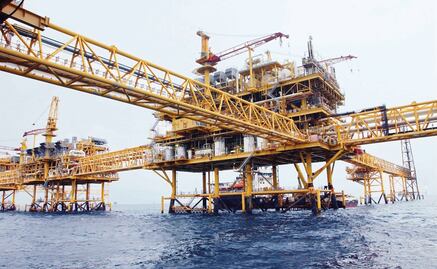Más Información

Secretaría Anticorrupción sanciona a dos empresas por buscar contratos con información falsa; imponen multa de miles de pesos

PRI en el Senado propone prohibir entrega de doctorados honoris causa sin rigor académico; pide honrar méritos comprobables

Dictan prisión preventiva a exasesora de García Luna por delincuencia organizada; falta definir su vinculación a proceso

Hombre muere arrollado por el Tren Maya en Yucatán; elementos de la Guardia Nacional resguardaron el lugar
During the administration of Enrique Peña Nieto , the state oil company Mexican Petroleums (Pemex) was unable to sort out its dire financial situation and operational degradation.
The company’s financial performance at the end of the six-year period showed accumulated losses worth MXN$231.8 billion , representing 60% of their total debt , which was estimated at MXN$2.82 trillion at the end of 2018.
Said financial detriment is equivalent to what it would cost to build six new refineries the size of the one that Mexico’s new administration plans to build in Dos Bocas, Tabasco , with a cost of USD$8 billion .
The losses are mostly due to a heavy tax burden and growing imports of hydrocarbons, according to information provided by Pemex at the Mexican Stock Exchange.
In 2013, the company disbursed MXN$373.49 million . By 2018, this figure had risen to MXN$657.9 billion, representing a 76.2% increase .
Furthermore, the import of hydrocarbons such as gasoline, diesel, jet fuel, LP gas, and natural gas has increased gradually in the past few years, representing a significant expense. Last year, out of every peso the company gained from the sale of goods and services, 33 cents had to be used to pay for foreign purchases.
However, to said losses are added huge sums Pemex used to pay for debt interests.
The report pointed to a disbursement of MXN$493.54 billion for said purpose during the past administration.
In the end, the impact of tax burdens on the state company’s finances forced it to reorient capital spending towards more profitable activities, thus reducing investment in the exploration and production sectors.
In 2013, resources directed to the search for new oil fields on high seas amounted to MXN$287.8 billion. Six years later, the budget spent on said activities shrunk to MXN$160.6 billion, which represented a decrease of 44.3% .
In their Hydrocarbon Reserves report , the National Hydrocarbons Commission acknowledged that a fall in investments caused proved crude oil reserves to drop from 9.81 billion barrels in 2014 to a mere 6.46 billion in 2018, a drop of 34.1%.
In fact, during the past administration, Mexico’s proven oil reserves lost 47.5% of their value, which is equivalent to USD$438.32 billion .
Ramsés Pech Razo, an energy sector analyst for the Caraiva y Asociados CEO Group
, commented that it was a price to be paid for the reduction of investment in exploration and production, coupled with a drop in oil prices.
In a conference call with investors, Pemex announced that the construction of the new Dos Bocas refinery will begin at the end of the year.
dm
Noticias según tus intereses
[Publicidad]
[Publicidad]










